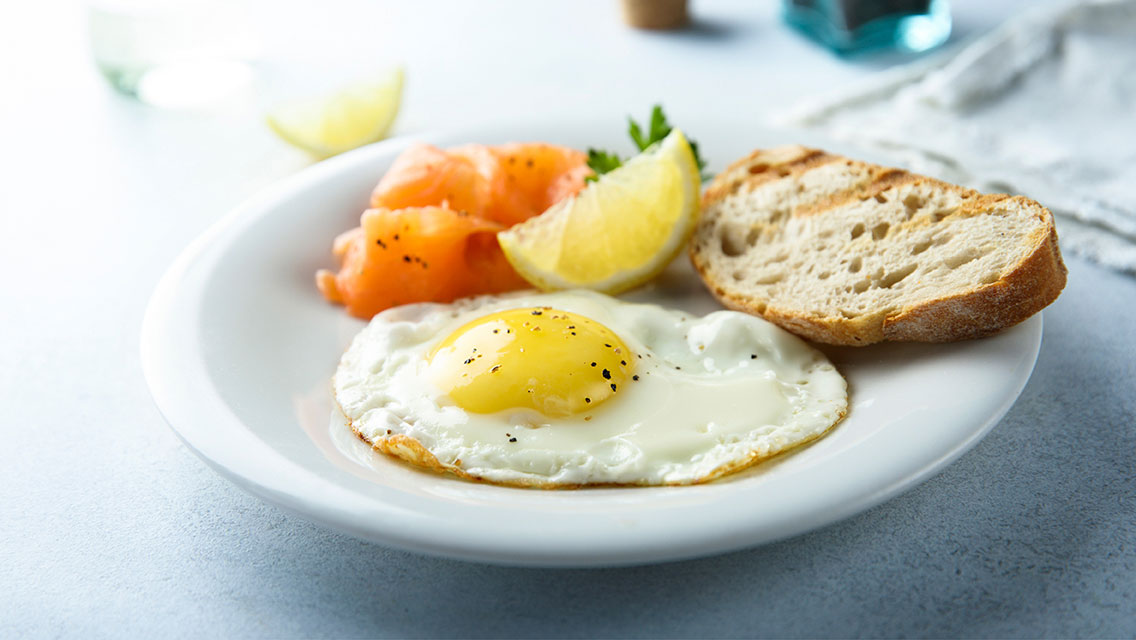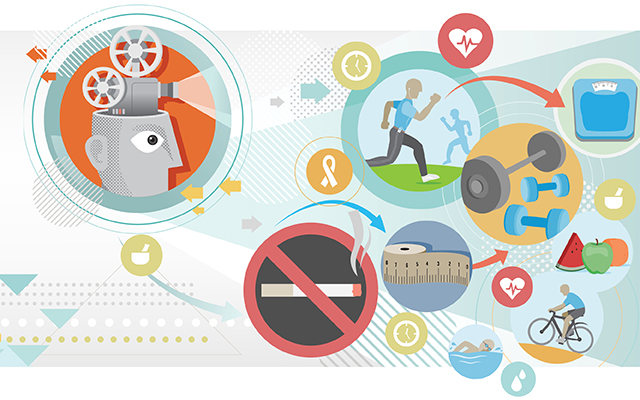Explore this article:
The Sugar-Sensitive Body ⋅ Eating for Recovery ⋅ 9 Top Foods for Addiction Recovery
When Clara Hernandes got sober in 2018, the sugar cravings hit. “I knew enough about nutrition to know that sugar was bad for me,” recalls the 34-year-old playwright, who comes from a family with a history of addiction. “But when it came down to a choice between having alcohol or sugar, I chose sugar.”
Within a few months, Hernandes (a pseudonym used to protect her privacy) found herself exhibiting the same red-flag behaviors with sweets that she’d displayed with alcohol. She’d wait anxiously for the workday to end so she could eat sugary treats for relief. She’d drive to the store late at night when her supplies ran low — and then lie to the cashier about why she was buying so much candy.
“I’d make up a story about babysitting my nieces and nephews and pretend it wasn’t all for me,” she says. “That’s when I decided I had to deal with the addiction that was helping me deal with my addiction.”
Hernandes’s experience is not unusual for people recovering from substance use disorder, says David Wiss, PhD, MS, RDN, founder of the Los Angeles–based addiction-treatment program Nutrition in Recovery. Alcohol, sugar, and other highly addictive substances share similar neural-reward pathways in the brain.
“It’s predictable that once someone gets sober they’ll have excessive consumption of rewarding dopaminergic foods, such as sugar,” he explains.
The brain’s nucleus accumbens region, which plays a role in reward behavior, is key to addiction. Sugar causes it to flood with dopamine, just as drugs do, and highly sweetened foods can lead to the same type of physiological dependence.
In fact, products that contain high-fructose corn syrup are often blatantly marketed as being addictive: Consider taglines like “Betcha can’t eat just one.” (Yes, even some potato chips are sweetened.)
Arwen Podesta, MD, FASAM, ABIHM, a New Orleans–based integrative doctor and psychiatrist who specializes in addiction medicine, explains that sugar and processed foods cause an imbalance of serotonin and dopamine in the brain. (Both are feel-good neurotransmitters: Serotonin is calming; dopamine is often associated with pleasure.) This imbalance can lead to cravings for “rewards” — namely, more sugar — that temporarily restore depleted neurotransmitters.
At least until the next crash.
“Whatever causes those reward spikes, crashes, and cravings can have the same effect as strongly addictive drugs,” she says.
Although sugar can play a pernicious role in sustaining substance addiction, these practitioners believe the flip side is positive news: Better nutrition can be a key tool to support recovery.
The Sugar-Sensitive Body
Why are some people largely immune to the addictive effects of sugar, drugs, and alcohol, while others are more likely to get hooked? Podesta believes that vulnerability to a substance use disorder is rooted in a combination of genetics and circumstances.
Trauma, for example, may trigger addictive behaviors in a person who’s genetically primed. But epigenetics research tells us that improved circumstances can help override these tendencies. “We can’t change our genes,” says Podesta. “But we can influence them with our environment and diet.”
Diet, in particular, may be a potent tool in addressing inherited inclinations.
“Some of us — particularly those for whom alcoholism runs in the family — are simply wired to be more sensitive than other people to sugar and other addictive substances,” notes Kathleen DesMaisons, PhD, an addictive-nutrition specialist and author of Potatoes Not Prozac: Simple Solutions for Sugar Addiction.
“People who aren’t sugar sensitive don’t tend to respond to drugs or sugar in the same way — they can just say no. Those of us with these other bodies have a little and want more.”
“People who aren’t sugar sensitive don’t tend to respond to drugs or sugar in the same way — they can just say no. Those of us with these other bodies have a little and want more,” she explains. “That insight is so liberating, because now instead of a character flaw, we know it’s a biochemical reality that can be changed.”
Others attribute sugar sensitivity to hypoglycemia, or low glucose levels. The late Joan Mathews-Larson, PhD, author of Seven Weeks to Sobriety, noted that the majority of people she treated for addiction tested positive for it.
“Alcohol becomes a way for them to cut off the symptoms of their hypoglycemia, such as anxiety and irritability, and feel normal for a while,” explained Mathews-Larson.
Licensed clinical social worker Jennifer Matesa places herself squarely in the sugar-sensitive camp. “Sugar was my first substance of abuse,” says the author of The Recovering Body, recalling a childhood binge when she ate the icing off an entire batch of birthday cupcakes her mother had baked for her sister. Years later, she found herself in recovery from a years-long, life-threatening opioid addiction.
Like many people, Matesa white-knuckled her way through her first year of sobriety — as long as she wasn’t using opioids or alcohol, her sober peers told her, anything else she put into her body was OK. So, she temporarily returned to sugar as her drug of choice.
It’s common practice in some 12-step programs to suggest sugar as a tool to satisfy cravings; it’s even included in Alcoholics Anonymous (also known as the “Big Book”), Matesa notes.
As strange as it sounds, this may have practical value in the short term, because stopping all stimulation to the dopamine pathways can be too much for those just starting their recovery. “If someone in early recovery tries to just drop sugar all at once, it can create a biochemical crisis that can set up relapse,” DesMaisons says.
She emphasizes, however, that sugar is not a sustainable solution to cravings. Substituting sugar addiction for alcohol or drugs isn’t just hard on overall health: It can backfire.
“Sugar activates the same part of the brain that opioids do,” says DesMaisons. “So, it seems to be a good solution in early recovery to eat a lot of sugar instead of doing drugs, but [over time] that just keeps those same reward pathways wide awake in the brain.”
“Sugar activates the same part of the brain that opioids do,” says DesMaisons. “So, it seems to be a good solution in early recovery to eat a lot of sugar instead of doing drugs, but [over time] that just keeps those same reward pathways wide awake in the brain. Then the sugar wears off, and you crave alcohol or drugs because that’s what the brain has been trained to want. It keeps those cravings active.”
DesMaisons takes a strict stance that sugar is dangerous for sobriety, but Wiss believes that some sugar can help augment dopamine levels in the immediate aftermath of detoxing from drugs or alcohol. Still, he says, the sooner you can free yourself from sugar addiction after getting sober, the better your brain will be able to recover from its dependency on reward — whether from drugs, alcohol, or sugar.
“Adding a nutrition intervention to recovery can also help restore healthy gut flora and release the brain from the cycle of addiction,” he says. “It can add a lot of healing at the gut–brain level.”
Eating for Recovery
When DesMaisons first advised “intractable” alcoholics (people with treatment-resistant addiction) to remove sugar from their diets, the results surprised her. “It had a huge impact on treatment outcomes,” she says. “People who had never been able to get or stay sober were able to make progress in an unexpected way when they changed their diet.”
Adding a nutritional component to other types of support seems to help people get a firmer grip on sobriety — perhaps because a low-glycemic diet helps train the brain and body away from the spike-and-crash cycle.
Still, says DesMaisons, a stable biochemical state is built slowly and methodically — it can’t be done overnight. That’s why weaning off sugar is the sixth step in her seven-step food program for addiction recovery, not the first. These are the seven steps, described in Potatoes Not Prozac:
1) Eat breakfast with protein every day
2) Keep a food journal
3) Eat three meals a day
4) Increase your serotonin naturally by eating a potato before bed every night
5) Move from refined grains to whole grains
6) Reduce or eliminate sugar
7) Build life skills
A sobriety-supportive diet is generally low in sugar, with plenty of stabilizing protein and antioxidant-rich vegetables. How that looks on the plate will vary from person to person; it’s important that nutrition not become punitive, warns Wiss.
“You don’t want to tell someone that now they just need to eat lentils and broccoli every day,” he explains. “Food can be a symbol of independence and self-care, a mechanism for someone to empower themselves and take their well-being into their own hands. People connect with that idea a lot more than just focusing on the biology.”
Likewise, any sobriety-oriented nutrition plan is most effective when combined with other recovery tools, such as a 12-step or other peer-support program, talk therapy, exercise, mindfulness, or some combination. With that in mind, these nutrients can play a key role in supporting a successful — and sustainable — recovery from substance addiction.
Protein
For people overcoming addiction, protein is one of the most vital nutrients. “If you think of the brain as a lattice that gets torn [by] substance abuse, protein provides the raw materials that allow the brain to reweave itself,” says DesMaisons.
Podesta notes that specific protein needs vary by person, but most people in recovery benefit from including protein in their breakfast every day.
“A lot of the susceptibilities in relapse have to do with the oxidative damage that happens in the brain during addiction,” she explains. “We need building blocks to repair that neurological damage, and having healthy protein with breakfast can help give us those tools.”
Quality Sources: Grassfed and pastured meats, eggs, wild-caught fish, legumes, nuts, and full-fat yogurt.
Fiber
Wiss focuses on fiber as one of the main nutrients needed to rebalance the body in the wake of addiction, pointing out that opioids in particular seem to harm gut bacteria and slow down the gastrointestinal tract.
“Fiber is broken down slowly by gut bacteria, and sugar is absorbed rapidly,” he says. “People who abuse substances often have a preference for those kinds of concentrated, rapidly absorbed substances.”
Adding fiber to the diet can nurture beneficial gut bacteria back to health, help heal the GI tract, and support the gut–brain connection.
DesMaisons suggests eating a potato every night before bed, in no small part because of its fiber-packed skin, which can help slow down the glycemic reaction and stabilize blood sugar. The complex carbohydrates in potatoes also help the body transfer tryptophan to the brain to support serotonin production while you sleep, she says.
Quality Sources: Vegetables and fruits, legumes, ground flax, chia seeds, and whole grains.
Whole Grains
The fifth step in DesMaisons’s food plan is switching from refined “white” grains to whole grains, such as brown rice, whole-grain bread and pasta, oatmeal, and unsweetened granola. (Whole grains deliver more fiber to support digestion and slow the metabolizing of the natural sugars in grains.)
She cautions people in recovery to steer clear of low-carb diets, such as keto or paleo. “Carbs are crucial for the brain to create and use the ‘just say no’ chemical, serotonin,” she stresses. “If you don’t have enough serotonin and you’re restricting carbs, you’ll feel crazy. People getting sober do much better when they incorporate slowly digested, complex carbohydrates, such as oatmeal and whole-grain toast.”
Quality Sources: Quinoa, millet, brown rice, buckwheat, wild rice, and steel-cut oats.
Healthy Fats
People addicted to drugs and alcohol tend to be deficient in omega-3 fatty acids, which are important for nerve and brain health.
“Fat helps regulate inflammation and keep the blood sugar steady for a longer duration,” says Podesta. “The brain’s myelin sheaths also need antioxidants and omegas for proper functioning.”
Research suggests that adding omega-3s to the diet may help reduce anger and aggressive behavior in people with addiction. And a study at the Indiana University School of Medicine found that among rats given fish oil rich in DHA fatty acids, some had reduced alcohol cravings.
Quality Sources: Avocados, walnuts, cold-water fish, and chia and hemp seeds.
Supplements
“In early recovery, there’s a stronger case to consider supplements,” says Wiss, noting that B vitamins, omega-3 fats, and probiotics can help stabilize the body as it detoxifies.
In the long term, however, it’s important to get nutrients from real food. “Supplements tend to appeal to people with dependency,” explains Wiss. “It’s a quick fix — a pill, powder, or potion. The goal is to move people to think differently: Instead of taking a pill, let’s go to the grocery store.”
DesMaisons recommends that people in recovery take a B-complex vitamin, vitamin C, and zinc, and aim to get the rest of their nutrients from real food. “Teaching people how to feed themselves creates a whole different environment in the body than taking a bunch of pills,” she says. “Eating food moves you into the relational aspects of your recovery.”
Quality Sources: Buy the best-quality supplements your budget will allow. Food-based supplements are often a good choice since they can be easier for the body to metabolize.
9 Top Foods for Addiction Recovery
The following foods support the body as it adjusts and rebuilds during recovery.
- Cilantro has powerful properties that may help detoxify the body of heavy metals. Mercury and lead, for instance, have been shown to disrupt the brain’s dopamine-reward system, which can increase vulnerability to addiction. (See “How Heavy Metals Affect the Body” for more about these toxins.)
- Grassfed and pasture-raised beef are healthy sources of protein, a critical building block for the recovering brain — which needs vital amino acids to repair oxidative neurological damage, notes Arwen Podesta, MD. Compared with grain-fed beef, grassfed contains more conjugated linoleic acid (CLA), a natural trans-fatty acid that supports many healthy functions. Protein itself also keeps blood sugar stable, which is why Podesta recommends people have it with all meals, including breakfast.
- Walnuts are packed with protein, healthy fats, and fiber, making them a great on-the-go option for snacking. They help keep blood sugar steady and provide the brain with much-needed antioxidants and anti-inflammatory phytonutrients.
- Flaxseed is rich in omega-3 fatty acids and fiber; it also nourishes beneficial gut bacteria, supports the GI tract, and strengthens neurological health. Try adding ground flaxseed to your morning smoothie, or pair flaxseed crackers with cheese or nut butter for an afternoon snack.
- Hemp is a nutritional superfood. Hemp-seed oil is rich in fatty acids, which nourish the brain’s myelin sheaths, and gamma-linolenic acid (GLA), which supports hormonal health. Hemp seeds (also called hemp hearts) have a nutty flavor and are a great source of magnesium and zinc, two vital nutrients for addiction recovery.
- Lemon juice helps promote healthy digestion by stimulating bile production in the liver. In addition, a study published in 2017 found that mice that consumed lemon juice experienced reduced alcohol-related liver damage compared with a control group.
- Potato skin — whether on a russet, Yukon gold, or sweet potato (which is technically not a potato) — is a rich source of fiber and other vital phytonutrients. It also provides complex carbohydrates. When eaten a few hours after a meal that contains protein, these carbohydrates stimulate the body to produce the insulin it needs to create serotonin, helping to regulate mood and impulse control. (Note: Try to stick with organic potatoes if you’re going to eat the skin.)
- Cold-water fish, such as salmon, mackerel, herring, and sardines, are some of the most potent sources of omega-3 fatty acids, as well as of protein and vitamin D. Vitamin D has been shown to help modulate the brain’s dopamine circuits and contribute to the creation of serotonin. Look for canned fish that includes skin and bones — that’s where you’ll find most of the vitamin D. (Learn how to enhance your diet and health with vitamin D at “Why Your Body Needs Vitamin D.”)
- Whole grains, like steel-cut oats, brown rice, and barley, provide complex carbohydrates that are digested more slowly than their refined counterparts. This process helps nurture beneficial gut bacteria and support satiety. Whole grains supply calming minerals — like selenium, potassium, and magnesium. And oats are a good source of tryptophan, a key ingredient in serotonin production. (Learn how to maximize your intake and signs that you may be low of these minerals at “5 Essential Minerals to Support Your Mind and Body.”)





This Post Has 0 Comments